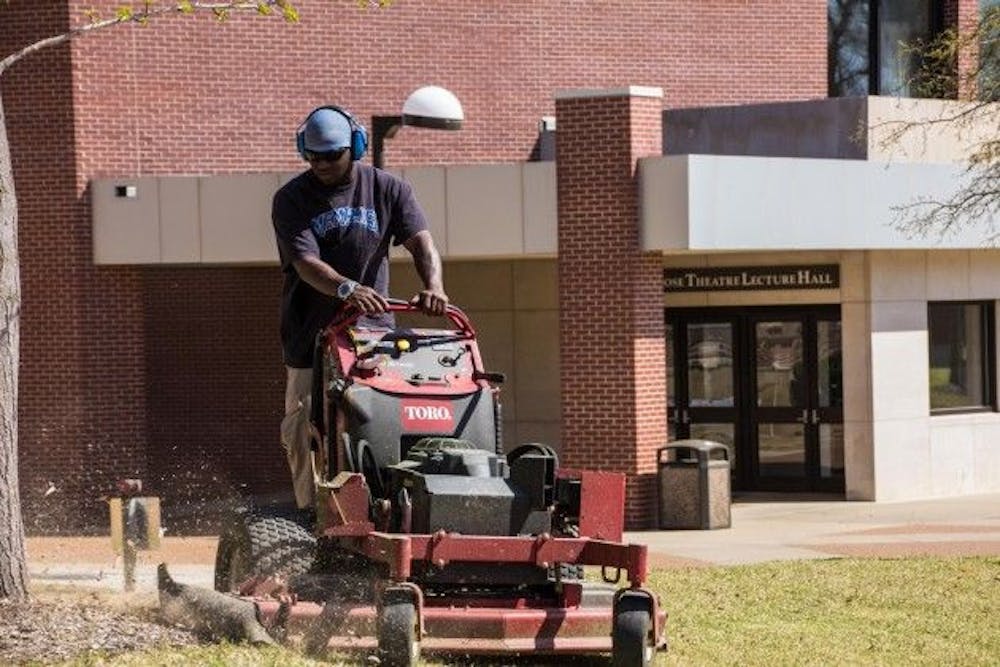Eighteen Physical Plant employees will have to find new jobs in the coming months, but they may not have to look far.
As part of a campus-wide restructuring initiative to balance the University's budget and close the $20 million gap, the administration announced plans to cut positions from departments across campus, including the Physical Plant.
Dean Hansen is an assistant vice president of the Physical Plant. He and his team were instrumental in coming up with the new structure of the Physical Plant. Hansen believes that those losing their jobs should have little problem coming back.
"With very few exceptions, these employees will be rehired into positions of similar pay and responsibility," Hansen said. "At the end of the day, I believe there will be very few RIF employees within Physical Plant who will not be able to find a home in the new organization."
The Physical Plant, which carries out the day-to-day maintenance of the University, is being restructured and will be losing 46 positions, 18 of which are currently staffed.
This is part of an ongoing effort by the University to attempt to reorganize itself in order to become more efficient. The positions being lost are being offset by the positions being created as a part of this reorganization. In the Physical Plant, 16 new positions will be created, and those who will be losing their jobs can reapply for these new positions and will be given first priority if they do, provided they meet the minimum requirements of the new positions.
In the Physical Plant, the new positions being created mean that there are now 39 positions that need to be filled before June 30.
Despite the cuts, Hansen said the quality of campus service will not decline. He believes the quality of service provided by the Physical Plant will increase.
"Bottom line, we cut Physical Plant's operating budget by 12 percent, with a nine percent cut in positions, but only negatively impacted one to two percent of our employees," Hansen said. "Combine that with no negative impact to our mission, and I consider that a win."
Linda Bonnin, vice president for Communications, Public Relations and Marketing, believes the restructuring will enable the University to better serve its students.
"The University is in the midst of creating new positions as part of its realignment," Bonnin said. "We are reinvesting resources in our priorities, which are teaching and research, to meet the evolving needs of our students. In doing so, we expect the net loss of jobs to be about 20."
The Physical Plant and extended programs weren't the only University departments affected by the cut. Emails were sent out to employees in departments across campus. The Business and Finance, Communications and Marketing, athletics, development, information technology and Academic Affairs departments will all be losing positions over the coming months.
The final list of job cuts and created positions is still being finalized, but the most current numbers are that 101 positions across campus will be eliminated, while 63 will be created.
The University is at the start of an 18-month process to balance its budget by moving the school's financial model over to an incentive-based one that funds colleges based on how well they perform their jobs.
In conjunction with these cuts, the University will be looking at other money-saving initiatives, such as reducing energy costs-both for financial and environmental reasons. Budgets have also been slashed-the Division of Business and Finance, the parent division of the Physical Plant, had its budget cut by $2.6 million.
Overall, the University's revenue is dependent on student enrollment and retention and appropriations from the state. Vice President for Business and Finance David Zettergren believes that things might be looking up for the University.
"We are seeing very positive trends in applications for the fall and also have several efforts to increase retention that we think we also trend positively," Zettergren said.
Provost David Rudd is confident that these cuts and changes will help alleviate some of the University's budget problems.
"The single greatest challenge for our students is financial, and we are committed to improving efficiency and containing tuition and fee costs," Rudd said.




